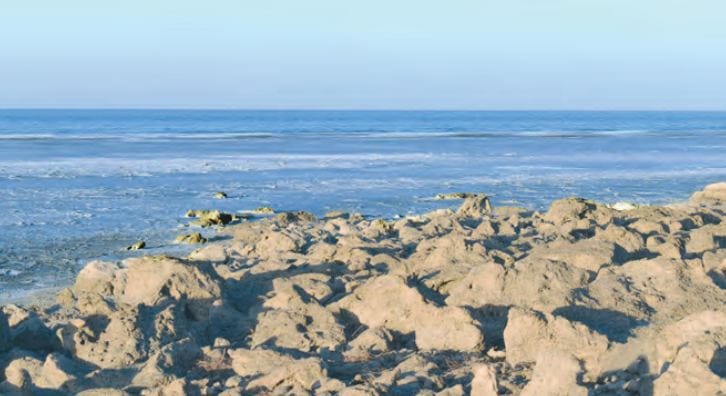Scientists from the Laboratory of Biodiversity of the National Institute of Deserts, Flora and Fauna had an expedition to monitor the vegetation of the Caspian deserts in order to assess their economic importance.
According to the newspaper "Neutral Turkmenistan", geobotanical research covered the Krasnovodsk plateau, the sands of Oktumgumy, the Turkmenbashi-Near Karabogaz seaside alluvial lowland.
The vegetation of the area adjacent to the southern coast of the Garabogazgol Bay that geographically belongs to the northern part of the Oktumgums sands is of interest for study.
Suzen, Circassian, and Santolinopolynian plant communities with the participation of astragalus and ephemera are typical here.
From the village of Sulmen, the scientists headed to the north-west, describing cone-bearing conifers along the way. Ephedra is one of the valuable fodder plants, especially in winter. It is also good for strengthening sands, but its use in this role is difficult, since its seeds, fruits and young shoots are actively eaten by animals and insects.
In the north, the researchers examined a chain of crusty-puffy and wet, as well as "black" salt marshes that stretch for many kilometers. They are united under the common name Kukurtshor.
According to local shepherds, there is a source of hydrogen sulfide in these places, hence their name. On the outskirts of Kukurtshor, plant groups, characteristic of highly saline soils, grow, composed of cone-shaped sarsazan. Pure communities of Amudarya reamuria are behind them, in some places, with the participation of tetyr.
Heading to the northeast, a group of scientists described tetrarches, Egnatioides, desert woodland with Haloxylon aphyllum.
Tetyr of these places are valuable food for camels on autumn-winter pastures.
On the shore of the Garabogazgol Bay, a desert woodland with Haloxylon aphyllum community was found, in the structure of which kandym, shrub reamyria, Russian thirst-quenching (little-tree saltwort), and Turkmen bean caper took part.
European Salicornia, or yata, is an annual plant, a strong halophyte. It grows where other plants do not survive, on wet and puffy salt marshes, sea coasts. The seeds of this fodder and industrial plant contain up to 30% of valuable Salicornia oil used in medicine, perfumery, food industry, in the production of some types of paper, as well as building materials. Camel eagerly eat the plant, the tolai hare likes to feast on shoots.
Upon completion of the expedition, valuable scientific material was brought to Ashgabat, that, after laboratory processing, will be used for comparative analysis and will be included in scientific reports, the source notes.

